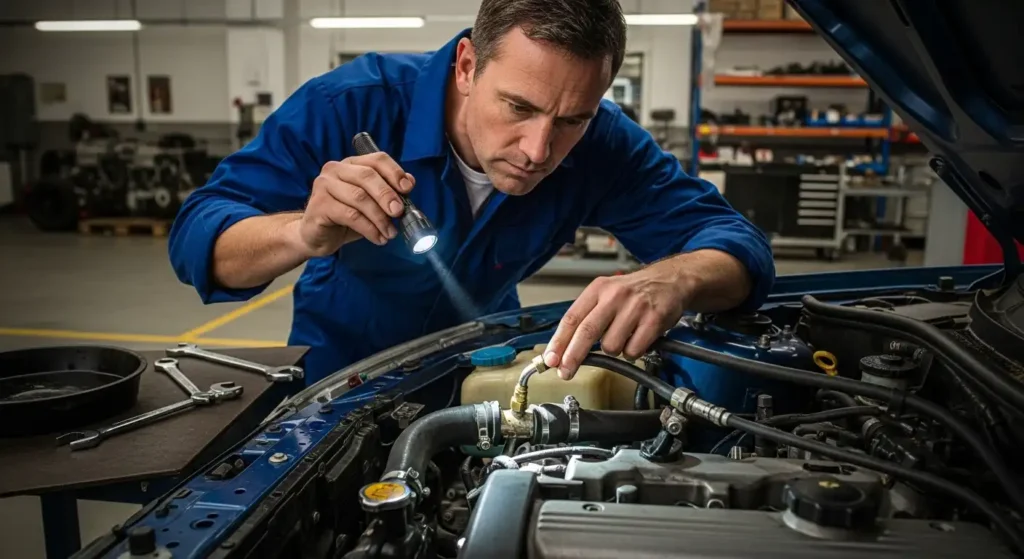High-performance driving demands more than horsepower and torque. Every extra bit of power comes with one unavoidable side effect: heat. Without proper engine thermal management, excessive heat can destroy reliability, reduce power output, and even lead to catastrophic engine failure. Whether you’re on the street, drag strip, or circuit track, understanding how to keep your engine cool is as important as tuning your ECU or upgrading your turbo system.
This comprehensive guide covers everything you need to know about thermal management: how heat is generated, the risks of poor cooling, essential upgrades, maintenance strategies, and even advanced technologies used in motorsport. By the end, you’ll have a clear blueprint to keep your performance engine running strong under extreme loads.

Why Thermal Management Matters in Performance Builds
Engines are essentially heat machines. Combustion releases energy, which is partly converted into power but mostly into heat. In fact, only about 30% of fuel energy translates into mechanical motion — the rest is heat that must be managed through cooling, oiling, and airflow systems.
- Performance engines produce more heat due to higher compression ratios, forced induction, and aggressive ignition timing.
- Track driving magnifies stress with prolonged high RPM use, minimal cooldown time, and higher ambient conditions.
- Poor thermal control results in detonation, power loss, warped components, or total engine failure.
For enthusiasts and tuners, mastering cooling isn’t just about safety — it’s about unlocking consistent performance lap after lap.
How Heat is Generated and Managed in Engines
To understand upgrades, you need to first grasp where the heat comes from:
- Combustion heat from burning fuel and air.
- Friction heat from pistons, bearings, and valvetrain components.
- Boost-related heat from turbos and superchargers compressing air.
- Exhaust heat radiating through headers, manifolds, and catalytic converters.
The engine uses several systems to manage this heat:
- Coolant system with radiator, water pump, and hoses.
- Lubrication system where oil reduces friction and carries heat away.
- Airflow over intercoolers, radiators, and brakes.
- Thermal coatings and insulation to shield critical parts.
 Common Symptoms of Poor Thermal Management
Common Symptoms of Poor Thermal Management
If your performance engine struggles with heat, you may notice:
- Overheating warning lights or rising coolant temperatures.
- Heat soak — loss of power after repeated pulls.
- Detonation, pinging, or pre-ignition.
- Oil breakdown or thinning under heat stress.
- Warped head gaskets, cracked manifolds, or melted wiring.
Core Cooling Upgrades for Performance Engines
Here are the top thermal management upgrades to consider:
1. High-Flow Radiators
A performance radiator with larger cores, more surface area, and efficient fins dissipates heat faster. Aluminum radiators are common for weight savings and efficiency.
2. Electric Fans and Shrouds
Dual high-speed electric fans with proper shrouding improve airflow through the radiator, especially in low-speed conditions like drag racing or traffic.
3. Performance Coolant
Coolants with better heat transfer properties and additives can reduce operating temps by a few degrees. Pair with regular flushing to avoid scaling.
4. Oil Coolers
Since oil absorbs engine heat, dedicated oil coolers prevent thinning, improve lubrication, and extend engine life during high-RPM runs.
5. Intercoolers (for Forced Induction)
A larger or more efficient intercooler reduces intake air temperatures, increasing density and reducing detonation risk. Both air-to-air and water-to-air setups have pros and cons.
6. Exhaust Heat Wraps & Coatings
Wrapping headers or using ceramic coatings lowers under-hood temperatures, protecting wiring, plastics, and intake components from radiant heat.
7. Thermal Barriers & Heat Shields
Strategically placed shields and barriers can protect intakes, brake lines, and electrical systems from nearby hot zones.
Advanced Motorsport Cooling Solutions
In professional racing, thermal management goes beyond basic upgrades:
- Water-methanol injection to cool intake charge and prevent knock.
- Dry ice intercooler boxes in drag racing for maximum intake cooling.
- Ducted brake cooling systems to avoid fade during endurance racing.
- Exotic coolants and nano-fluid research for enhanced heat transfer.
 Maintenance Best Practices
Maintenance Best Practices
No upgrade matters if your system isn’t maintained. Best practices include:
- Regularly bleeding air pockets from coolant systems.
- Checking hoses, clamps, and fittings for leaks.
- Monitoring oil pressure and temperatures on gauges.
- Changing coolant and oil on strict intervals for track cars.
- Inspecting intercoolers and radiators for debris or damage.
Balancing Performance and Reliability
Thermal management is about finding the sweet spot: aggressive enough to support horsepower, conservative enough to protect reliability. Every degree of unnecessary heat saps power, shortens lifespan, and increases risk. Smart thermal control is as important as tuning timing maps or upgrading turbos.
Real-World Example: Turbocharged Track Car
Consider a turbocharged four-cylinder running at 400+ horsepower on track. Without a larger radiator, oil cooler, and efficient intercooler, coolant temps spike above 230°F and power drops. After adding a dual-pass radiator, front-mount intercooler, and oil cooler, temps stabilize at 200°F — unlocking consistent performance lap after lap.
Conclusion
Engine performance is nothing without reliability. Thermal management is the invisible hero that allows tuners and drivers to push harder, longer, and safer. By investing in proper cooling systems, maintaining them diligently, and understanding the science of heat, you ensure your high-performance build delivers its best — every time you put your foot down.

 Common Symptoms of Poor Thermal Management
Common Symptoms of Poor Thermal Management Maintenance Best Practices
Maintenance Best Practices